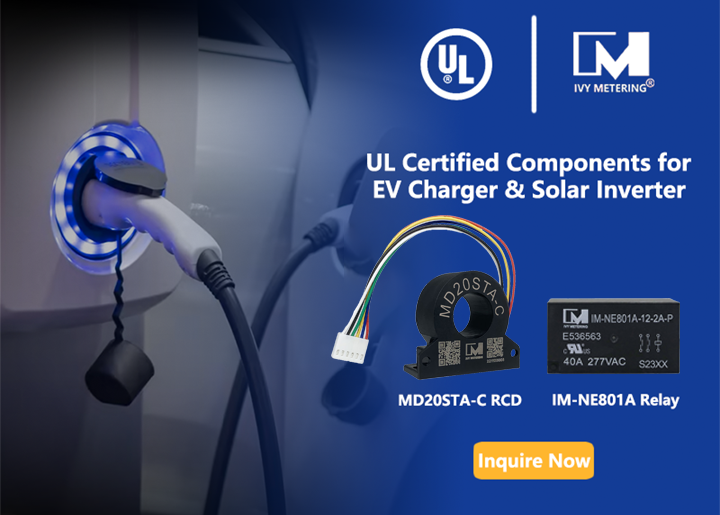UL Certified CCID Protection Device in EV Chargers
The global electric vehicle industry is in a stage of rapid growth, especially in China, Europe, and North America. The sales and export volume of charging piles supporting electric vehicles are also rising year by year, which is a huge opportunity for domestic charging pile companies. Charging pile products need to be UL certified to enter the US market, and safety regulations need to comply with UL2594/UL2231-2 standards. This is also a technical challenge that major charging pile companies need to face. Complying with UL certification means that there will be no safety hazards, and it will also increase the brand credibility of the product.

CCID is an essential safety feature in EV charging stations, helping to prevent electrical fires and vehicle damage. It is important to note that CCID is not a substitute for proper maintenance and installation of an EV charging station. EV charging stations must be installed and maintained by qualified professionals to ensure the safety of the charging process.
UL 2231 is a safety standard developed by UL for charge controllers and CCID devices used in electric vehicle charging stations. The standard was first introduced in 2014 to address safety issues associated with charging electric vehicles.
The UL 2231 standard outlines specific safety requirements for CCID devices, including testing and performance criteria. The standard is designed to ensure that CCID devices used in electric vehicle charging stations are safe and reliable. UL 2231 is specifically relevant to CCID devices used in electric vehicle charging stations. CCID devices are a critical safety feature in electric vehicle charging stations, and the UL 2231 standard helps ensure that these devices meet specific safety requirements.
It is worth noting that CCIDs like GFCIs will trigger when fault current leaks to ground in some way. There are two possible thresholds here. The more sensitive version is the CCID5, which triggers when the current is 5mA. This is very similar to the typical bathroom GFCI that American homeowners may see in bathrooms and next to kitchen sinks. The next level up is CCID20, which triggers when the ground fault current is 20mA, allowing for tripping when a safe ground path exists. It is worth noting that the US and Europe have slightly different requirements for these thresholds.




